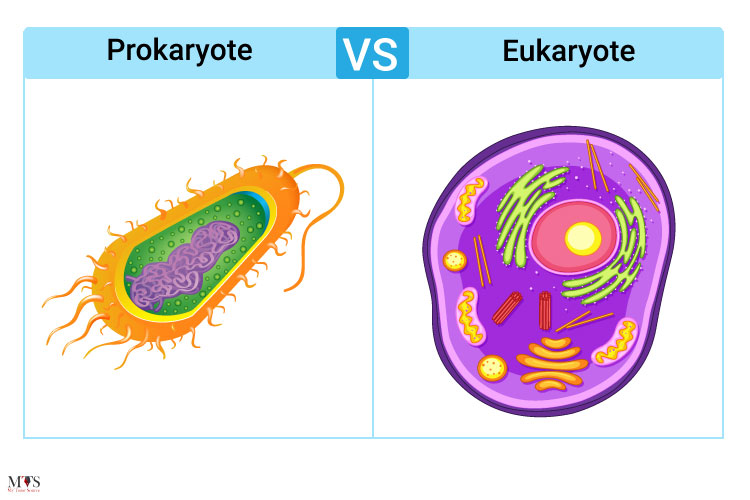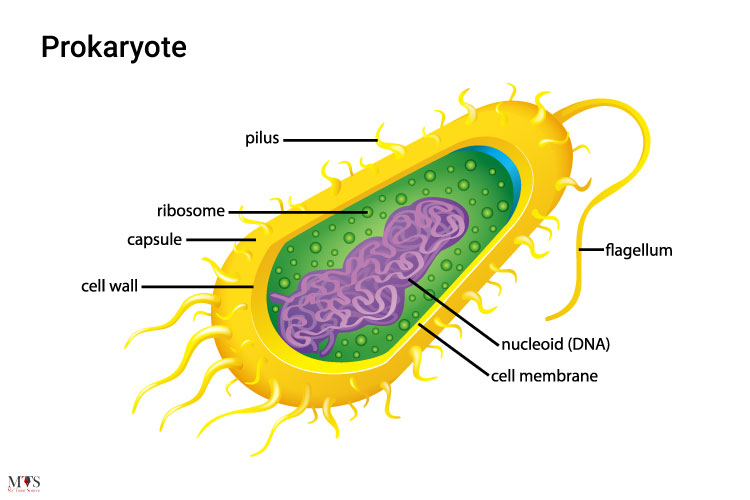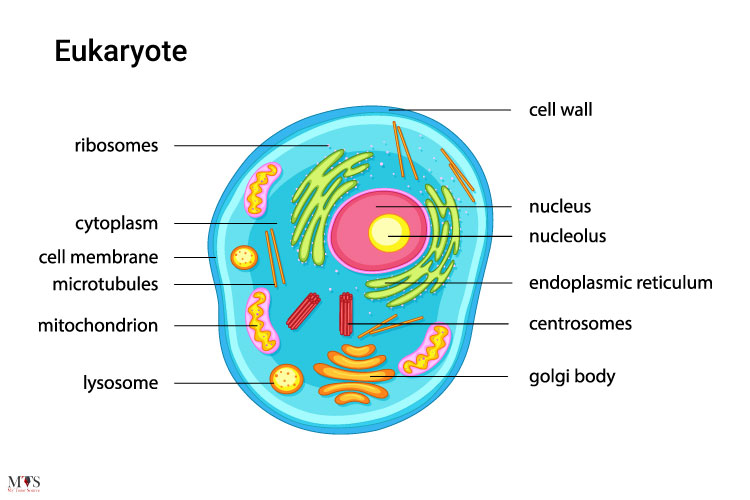

The cell was discovered by Robert Hook, in 1665, and can be described as a small room that acts as the structural and functional unit of life. There are different types of them as well; some with membrane-bound organelles and some without them. Based on what their internal structure looks like, cells can be of two major types called Eukaryotic cell and Prokaryotic cell.
But what is the major factor which compares prokaryotes and eukaryotes? Guess what? There isn’t one but multiple factors that set both types of a cell apart from one another. Let’s look at all the ways prokaryotes and eukaryotes differ:
There are two types of organisms based on how many cells they have. So, organisms that only have a single cell which they are made of are called unicellular organisms or single-celled organisms. On the other hand, the organisms that are made of more than one cell (or a lot of them) are called multi-cellular organisms.
Scientists found out that there are some living organisms that do not contain a nucleus that is protected by a distinct cell membrane. And that was the start of the discovery of eukaryotic and prokaryotic cells.
Therefore, prokaryotes and eukaryotes are majorly differentiated on the basis of the fact whether their genetic materials are protected by a nuclear envelope or if it is absent. Let’s see what prokaryotes and eukaryotes are in detail:
These are single-celled or unicellular organisms in which membrane-bound structures are absent. The most important structure without a membrane is the nucleus. Cells of prokaryotes are smaller and super simple. They normally have a diameter of about 0.1-5 μm in diameter. Super small, right?

Despite the absence of membrane-bound cell structures, prokaryotic cells do have proper cellular regions for example their DNA can be found bundled together in the nucleoid.
Other structures that you may find in the prokaryotic cell are the ribosomes (these are responsible for protein synthesis), cell wall (protect the cell from external environment and offer structure), cell membrane (it is also called plasma membrane and it keeps the cell separate from the external environment), capsule (it is a structure that surrounds the cell wall and is made of carbohydrates), fimbriae (these are hair-like, thin structures that are responsible for cellular attachment), pili (these are involved in multiple functions such as DNA transfer and attachment, they are rod-shaped), and flagella (these are tail-like, thin structures that help the cell to move).
Bacteria and archaea are two of the most common examples of prokaryotes.
Now, let’s move on to eukaryotes:
A eukaryote can be defined as an organism with cells that have a distinct nucleus and all of its organelles are surrounded by a properly structured plasma membrane.
What are organelles? Well, these are internal structures that can be found in a cell performing multiple functions, including protein synthesis and energy production

Eukaryotic cells are larger than prokaryotic cells as the former measure around 10-100 μm. They are complex in structure, however, a surprising fact is that even though most eukaryotes are multicellular organisms, you can also find single-celled eukaryotes.
In a eukaryotic cell, every structure is bound by a membrane and performs its own specific functions. Here is an overview of all the structures you may stumble on when studying eukaryotic cells.
Some cellular structures that you can find in a eukaryotic cell are the nucleus (this stores the genetic information in the form of chromatin), nucleolus (it is where the ribosomal RNA is created and it is present inside the nucleus of the cell), plasma membrane (it is made of phospholipids and protects the cells and its organelles), cell wall (also known as the cytoskeleton, it lets the cell move, offers structure and is involved in cell division), ribosomes (these do protein synthesis), mitochondria (the powerhouse of the cell that is involved in energy production), cytoplasm (this is the part of the cell present between the plasma membrane and the nuclear envelope), cytosol (it the gel-like substance that houses the organelles), endoplasmic reticulum (this organelle is responsible for protein transportation and maturation), vesicles & vacuoles (these are membrane-bound sacs that play a role in storage and transportation).
Some other organelles that can be found in some eukaryotic cells (but not all of them) are lysosome, Golgi apparatus, and chloroplasts. Protozoans, algae, animals, fungi, and plants are the most common examples of eukaryotes.
The most important (and the most common too) difference between bacteria and a eukaryote is the presence of a membrane-bounded nucleus in a eukaryotic cell and its absence in bacteria. However, there is a bacterium found in bacteria that is called Gemmata obscuriglobus. This is a double membrane that surrounds the DNA in bacteria in a nucleus-like structure. As this bacterium is contiguous with the plasma membrane of the bacteria, hence, it is not the same as a eukaryotic nuclear membrane.
In other words, there’s a fundamental organizational and kinetic difference between bacteria and eukaryotes because the genetic information is expressed in proteins and is converted into organization, function, and cellular structure.
Here’s a summary of all the ways prokaryotes and eukaryotes differ from each other:
| Sr. No | Character | Eukaryotic cell | Prokaryotic Cell |
| 1 | Size | 5-100 um | 0.1- 5.0 um |
| 2 | Nucleus | Present | Absent |
| 3 | Membrane Bound Nucleus | Present. | Absent. |
| 4 | Chromosomes | More than one chromosome is present. | Only one chromosome is present (however, not true chromosome plastids) |
| 5 | Cellular Structuring | Multicellular | Unicellular |
| 6 | Lysosomes & Peroxisomes | Present | Absent |
| 7 | Microtubules | Present | Absent |
| 8 | Endoplasmic reticulum | Present | Absent |
| 9 | Mitochondria | Present | Absent |
| 10 | Cytoskeleton | Present | Absent |
| 11 | Size of Ribosomes | Larger | Smaller |
| 12 | Golgi apparatus | Present | Absent |
| 13 | Chloroplasts | Present (in plants) | Absent (however, chlorophyll is scattered in the cytoplasm) |
| 14 | Cell Wall | It is chemically simpler | It is chemically complex (Present in plants & fungi) |
| 15 | Vacuoles | Present | Absent |
| 16 | Permeability of Nuclear Membrane | Selective | Not present |
| 17 | Sexual Reproduction | Present | Absent |
| 18 | Endocytosis and Exocytosis | Present | Absent. |
| 19 | Pili and Fimbriae | Absent | May or may not be present |
| 20 | Occurrence of transcription | Happens inside the nucleus | Happens in the cytoplasm |
And that’s all about prokaryotes and eukaryotes; what they are and what are the factors that set them apart.